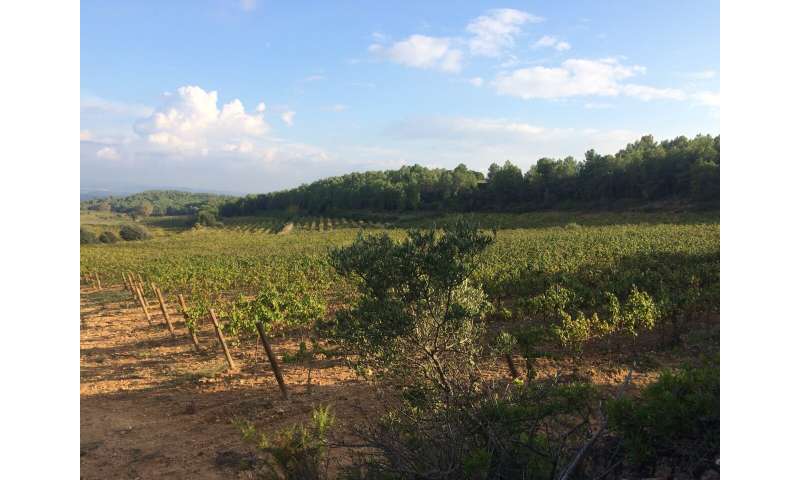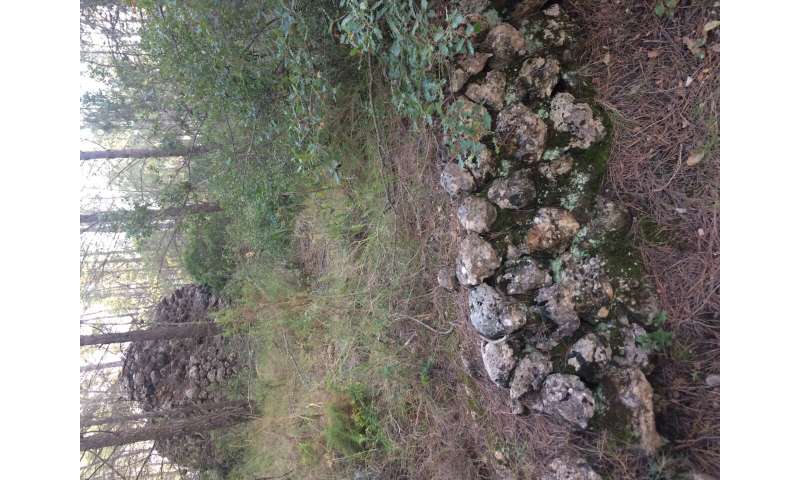A new study highlights abandoned agricultural lands as key carbon sinks in the fight against climate change

A new commentary article sheds light on the historical and potential future role of post-agricultural landscapes (PALs) in combating climate change as crucial carbon sinks. Led by researcher Stephen Bell during his stay at the Institute of Environmental Science and Technology at the Universitat Autònoma de Barcelona (ICTA-UAB), the work emphasizes the significant carbon sequestration potential of PALs globally, such as abandoned agricultural lands. For example, in an earlier study focusing only on Spain, the authors found that abandoned agricultural lands can accumulate soil organic carbon at a remarkable rate of 2.3% per year.
Published in the journal Nature Communications, the commentary article emphasizes the urgent need to enhance our understanding of PALs as crucial carbon sinks. This call-to-action stems from two fundamental reasons outlined by the researchers. Firstly, PALs can be found indiscriminately in agricultural regions worldwide, making them globally relevant in the pursuit of climate mitigation efforts. Secondly, these landscapes, often depleted of carbon due to years of damaging agricultural practices, possess immense potential for recarbonization. The researchers primarily focus on increasing soil carbon stocks, considering it more permanent than vegetation carbon stocks.
To advance in the understanding of these abandoned agricultural fields, researchers emphasize the need to address spatial and temporal uncertainties. Spatial uncertainties involve accurately identifying the location and duration since agriculture ceased in these areas. Temporal uncertainties encompass understanding the rate, duration, and total recarbonization potential of different types of unused agricultural lands.

Identifying and mapping these abandoned agricultural fields pose significant challenges due to their complex nature, varying definitions and terminologies, as well as cyclic appearances and disappearances due to recultivation. Furthermore, their relatively small size makes them difficult to detect using satellite imagery. Obtaining temporal data on soil carbon through resampling field sites is also costly and labor-intensive.
Nevertheless, the researchers highlight encouraging developments in reducing spatial uncertainties. The emergence of new remote sensing products and enhanced computing resources offer promising avenues for more accurate spatial mapping. Additionally, the article proposes a novel approach to address temporal uncertainties by assembling existing published data on PAL chronosequences and establishing new field sites for rapid and affordable data collection.
The implications of this research extend to land management and climate change mitigation. Identifying the most suitable locations for carbon sinks in abandoned agricultural lands can guide decision-making processes regarding their promotion or prevention, considering competing interests such as food production and local land rights. The researchers emphasize the potential of uncontested former agricultural lands in particular, as recarbonizing zones. "This commentary underscores the critical role that post-agricultural lands play in mitigating climate change by acting as vital carbon sinks," summarizes Stephen Bell, the researcher who conducted the study during his stay at ICTA-UAB and while on a research visit in Dr. César Terrer's lab at MIT.
"The long history of agriculture has depleted more carbon from soil worldwide than all the carbon emitted from the USA since the industrial revolution. Abandoned agricultural lands represent some of the only cases where soil carbon has been significantly restored, but we need to better quantify this process", says Bell, who is currently a postdoctoral researcher at LSCE-CEA in Paris, France. He adds, "by improving our understanding of these landscapes, we can make informed decisions to maximize their potential while balancing other social needs. The research team's findings pave the way for more effective land management strategies in the face of a changing climate."
More information:
Stephen M. Bell et al, Quantifying the recarbonization of post-agricultural landscapes, Nature Communications (2023). DOI: 10.1038/s41467-023-37907-w
Provided by Autonomous University of Barcelona